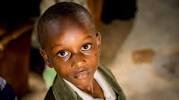Economic growth is measured by the increase or decrease in the market value of goods and services produced by an economy over time. In addition to GDP, which describes the market value of final goods and services produced within the country, other common measures of economic activity include:
The individual value of production by different economic sectors (e.g., agriculture, service, energy) in relation to GDP;
Gross National Product (GNP), which accounts for expenditures or production by a country’s citizens, regardless of where the activity occurs; and
Gross National Income (GNI), which measures the income a country receives both domestically and abroad by summing GDP and net income received overseas.
Many studies use per capita measures of these indicators of economic activity, to control for population size. Others use household survey data to measure changes in mean income or consumption levels, arguing that these indicators are more relevant measures of economic growth for poor populations.
The figure below illustrates how GDP, GDP per capita, GNI, and GNI per capita measures compare in Nigeria between 1990 and 2014. The measures are relatively consistent but differences in particular periods could lead to very different interpretations. For example, measures of GDP increased significantly between 2003 and 2004, suggesting strong economic growth, but measures of GNI were flat in this period, indicating no growth. We would reach nearly opposite conclusions if we looked at changes from 2004 to 2005. These patterns reflect differences between income earned domestically by non-citizens and income earned by Nigerians abroad.
Measures of Economic Growth in Nigeria
Measuring Poverty
Poverty measures attempt to represent the welfare of individuals who live below some minimally acceptable level of income. Like economic growth, poverty is measured in different ways.
The international poverty headcount ratio calculates the proportion of the population that has incomes below the international poverty level ($1.90/day at Purchasing Power Parity (PPP) – which controls for differences in how much a given amount of money can purchase in a given country).
The national poverty headcount ratio calculates the proportion of the population that has incomes below the national poverty level (individually determined by each country).
The poverty gap measures the average gap between poor individuals’ income and the poverty level (in this case the international level of PPP $1.90/day PPP).
The Multidimensional Poverty Index (MPI) determines if an individual is deprived on a third or more of ten indicators (child mortality, nutrition, years of schooling, school attendance, cooking fuel, toilet, water, electricity, floor, and assets), and then measures the intensity of their poverty by the number of deprivations they experience.
Nigeria Poverty Estimates
The figure above displays how estimates on the extent of poverty in Nigeria vary by poverty measure. We see that except for in 1992, using the national poverty line yields a higher poverty percentage. Using the international as opposed to the national poverty line would lead to very different interpretations of poverty trends in Nigeria. Using the national poverty level, we would observe a fall in the poverty ratio from 1985 to 1992, a rise in 1996, and then small decreases in 2003 and 2009. The international poverty level on the other hand suggests rising poverty from 1985 to 1996, followed by a larger fall in 2003 and almost no change in 2009.

Taken from here
https://evans.uw.edu/policy-impact/epar/blog/economic-growth-poverty-nigeria-part-1-2
Downvoting a post can decrease pending rewards and make it less visible. Common reasons:
Submit
That’s your problem man 🖕
Downvoting a post can decrease pending rewards and make it less visible. Common reasons:
Submit